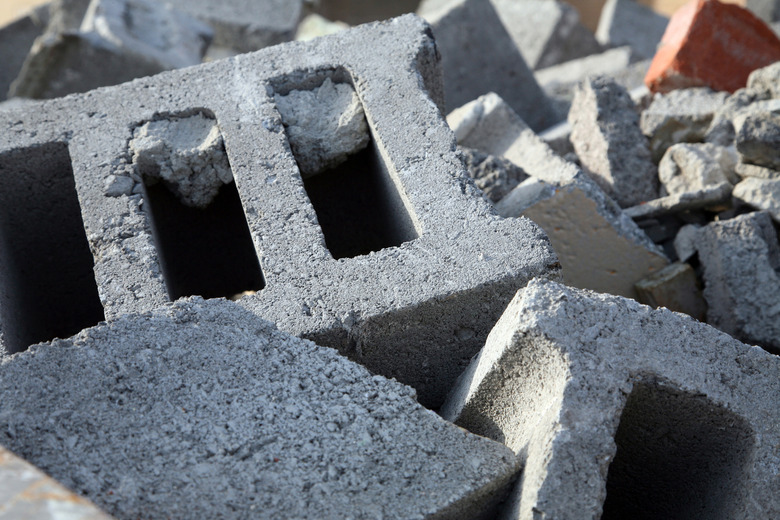Safe Vegetable Growing In Cinder Blocks
Step 1
Creating raised beds out of cinder blocks makes a permanent, as well as inexpensive, structure, especially if you use mortar, advises University of Florida/Miami-Dade County Extension horticulturalists. For safety, make sure you build on a level surface; if you don't use mortar, limit the height of your bed to two blocks tall so that the walls won't fall over. If you've made raised beds out of your cinder blocks, be sure you can reach the interior of the beds without stepping into the bed or on the blocks. Limiting the beds to 4 feet wide works well for most gardeners. Cinder blocks are typically 8 by 8 by 16 inches, and the hollow blocks may have two or three openings. One way to increase your growing space, as well as to help stabilize your beds, is to fill the blocks, as well as the beds. with soil and plants.
Step 2
- Creating raised beds out of cinder blocks makes a permanent, as well as inexpensive, structure, especially if you use mortar, advises University of Florida/Miami-Dade County Extension horticulturalists.
- If you've made raised beds out of your cinder blocks, be sure you can reach the interior of the beds without stepping into the bed or on the blocks.
Containers
Step 1
Even if you don't have room for raised beds, cinder blocks can provide efficient containers for vegetable production, according to Clemson Extension horticulturalists. Growing vegetables in containers is another way to increase your garden space. Because cinder block containers are small, the fact that they leach lime into the soil over time may be a concern. It is safe to grow most vegetables in a somewhat alkaline soil pH, however. Radishes are the only common vegetable crop small enough to grow in a cinder block opening that prefers very acidic conditions, with a pH under 5.5. Good choices for container gardening include any vegetable that needs only a small space for the root system, such as lettuces. Another tip is to choose smaller cultivars, such as dwarf or miniature varieties.
Step 2
- Even if you don't have room for raised beds, cinder blocks can provide efficient containers for vegetable production, according to Clemson Extension horticulturalists.
- Good choices for container gardening include any vegetable that needs only a small space for the root system, such as lettuces.
Know Your Source
Step 1
Although reusing old cinder blocks for a vegetable garden is typically a cost-effective and environmentally friendly practice, for safety's sake, only use blocks from a known source. Because of their porosity, blocks may absorb dusts or liquids. Cinder blocks from flooded areas, for example, can contain contaminants such as fuel oils, warns North Dakota Statue University Extension engineer Kenneth Hellevang.
Auxiliary Uses
Step 1
If you don't care to use cinder blocks to create raised beds or containers for your vegetables, you may use the blocks in close proximity to your plants. Gardeners often find the blocks helpful for containing compost piles. Because compost is usually piled at least a couple of feet high to maximize the pile heating up, it is especially important to heed the safety warning to use mortar if you stack cinder blocks to create a retaining wall. Similarly, if you use blocks to hold decorative pots off the ground or place blocks around your garden for any other purpose, be mindful of potential leaching of lime or contaminants.
Step 2
- Although reusing old cinder blocks for a vegetable garden is typically a cost-effective and environmentally friendly practice, for safety's sake, only use blocks from a known source.
References
- University of Florida/Miami-Dade County Extension; A Guide to Raised Bed Gardening in Miami-Dade Florida; John McLaughlin, et al.; February 2002
- Clemson University Cooperative Extension; Container Vegetable Gardening; Bob Polomski, et al.; March 1999
- Oregon State University Extension: 10-Minute University: Raised Bed Gardening
- North Dakota State University Extension; Cleanup of Residential Oil Spills Associated with Flooding; Kenneth Hellevang
